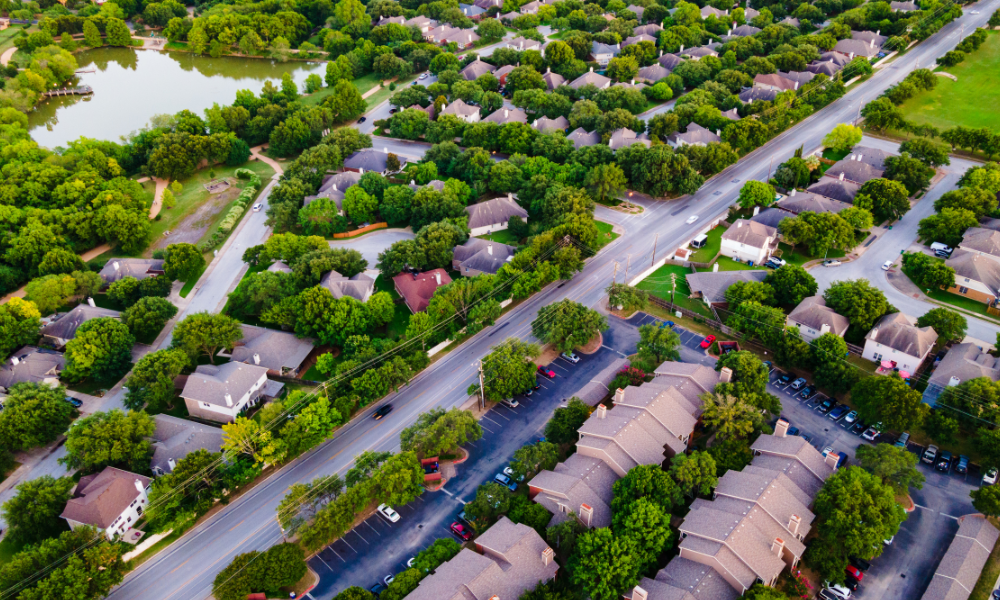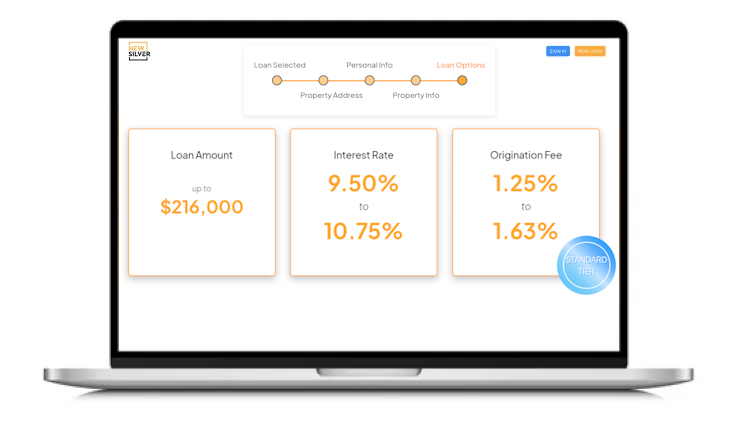The Short Answer
In October, the median sales price for a single-family home in the U.S. was $437,300, up from $426,800 the previous month, according to the latest U.S. Census data. The housing market in 2024 was marked by slow activity due to tight inventory and rising home prices, which continued to climb despite reduced transaction volumes. Looking ahead to 2025, experts predict a gradual transition from a seller’s market to a buyer’s market, supported by declining mortgage rates, slower home price growth (perhaps home prices drop), and improving housing affordability.
Economic forecasts highlight strong job creation, steady wage growth, and the potential for innovation-driven efficiencies in real estate construction and valuation. While affordability challenges and the “lock-in effect” will persist, increasing inventory and policy shifts are expected to create a more balanced and accessible market for both buyers and investors.
Key Points
Bank of America's Predictions For 2025
While 2024 saw a decline in inflation and interest rates, the outlook for 2025 appears increasingly optimistic, especially for the housing market. The Federal Reserve has signaled a shift toward interest rate cuts, which could make borrowing more affordable and reignite demand for home purchases. Bank of America Private Bank has identified 2025 as a pivotal year for disruptive innovation, with positive ripple effects anticipated across multiple sectors, including real estate.
According to BofA Global Research economists and strategists, the US economy is poised to outpace other developed nations in both economic and earnings growth. In particular, the housing market could benefit from renewed buyer confidence, spurred by lower financing costs and steady wage growth. Additionally, US equities are expected to start the year on a strong note, further fueling investor sentiment.
Chris Hyzy, Chief Investment Officer at Merrill and Bank of America Private Bank, describes 2025 as “a launchpad for an expanding era of innovation that is likely to affect every corner of the market and the economy.” He highlights the transformative role of generative artificial intelligence (AI) in boosting productivity, reducing operational costs, and expanding profit margins. AI-driven automation, particularly in manufacturing and construction, is set to streamline processes, addressing labor shortages and improving efficiencies.
For the real estate market, advancements in AI and automation could lead to faster, more accurate property valuations, increased construction efficiency, and lower housing development costs. These trends, combined with improving macroeconomic conditions, could create a robust environment for both residential and commercial real estate investors. As innovation accelerates and borrowing conditions improve, 2025 may indeed offer a wealth of new opportunities for those looking to capitalize on a rejuvenated housing market. This may depend on policy shifts however, and how the rest of the world responds.

Fannie Mae's Forecasts For 2025
Despite hopes for significant relief, interest rates are likely to remain relatively high throughout 2025 unless the economy experiences a sharper slowdown than anticipated. According to Fannie Mae’s latest projections, the 30-year fixed mortgage rate is expected to ease toward 6% by the end of the year, but volatility will likely remain a feature of the market. While economic growth and job gains are forecast to cool slightly, core inflation is proving stubborn, and the Federal Reserve may not hit its 2% target until 2026.
One persistent headwind for the housing market is the “lock-in effect”—homeowners with ultra-low mortgage rates are reluctant to sell, keeping inventory tight and stifling transaction activity. This trend, paired with lingering affordability challenges, means the real estate market will likely see only modest movement in 2025. Fannie Mae expects existing home sales to climb to about 4.25 million units, up a modest 4.8% from the projected 2024 pace of 4.06 million.
There is some encouraging news for buyers, though. Home price appreciation, which has been surging, is set to slow. Home prices are expected to rise 3.6% year-over-year in 2025, a notable cooldown from the 5.8% growth forecast for 2024. With wage growth holding steady, this could bring a much-needed improvement in housing affordability—particularly for first-time buyers who have been priced out in recent years.
On a broader level, Fannie Mae’s economists are optimistic that the U.S. economy will remain resilient. While inflationary pressures and policy uncertainties persist, the economy is projected to expand at a steady pace through 2026, supported by a stable labor market and tempered consumer spending.
Overall, while the housing market may not see a dramatic shift in 2025, a gradual decline in rates and slower home price growth could mark the beginning of a more balanced and accessible landscape for both buyers and sellers.
Will The Affordability Challenges Persist Or Subside?
Affordability challenges are likely to continue into 2025, with Fannie Mae predicting that existing home sales will only increase slightly, from recent lows. However, Realtor.com’s 2025 Housing Forecast projects a 3.7% increase in existing median sales price (home prices), a deceleration from previous years, which, coupled with anticipated wage growth, could slightly enhance affordability.
What Is The 'Lock-In Effect' And How Will It Impact Home Prices?
The lock-in effect refers to a phenomenon where homeowners become reluctant to sell their homes, effectively locking themselves into their current properties and mortgages. This hesitation significantly restricts the number of homes available on the market, contributing to inventory shortages and limiting housing activity.
Several factors drive the lock-in effect, including rising interest rates, changes in capital gains taxes, fluctuations in home prices, economic uncertainty, and increased debt or negative equity. Essentially, any circumstance that makes selling a home less financially or emotionally appealing can contribute to this effect, even for homeowners who might otherwise be inclined to move.

Are Mortgage Rates Likely To Increase Or Decrease In 2025?
Fannie Mae’s economists project that average mortgage rates will decrease in 2025, though they are still expected to remain above 6%. This outlook reflects the Federal Reserve’s cautious approach to lowering interest rates. Meanwhile, housing inventory is gradually increasing, a positive trend that, while promising, still falls short of achieving a balanced market.
Political dynamics are also influencing the housing market. Redfin economists Daryl Fairweather and Chen Zhao noted in their 2025 predictions:
Investors are anticipating that if President-elect Donald Trump implements a significant portion of his proposed tax cuts and tariffs, and the economy stays strong, the Fed will only cut its policy rate twice in 2025, keeping mortgage rates high.
This combination of fiscal policies and restrained rate cuts could sustain upward pressure on borrowing costs, impacting both buyers and sellers in the real estate market.
Will It Be A Buyer's Or Seller's Market?
The general consensus among real estate experts is that 2025 will mark a gradual shift from a seller’s market to a buyer’s market.
With improving job numbers and recent stock market gains, more Americans are expected to enter the housing market, says Lawrence Yun, Chief Economist of the National Association of REALTORS®. Yun predicts nearly 2 million new jobs will be added in 2025, with another 2 million expected in 2026, which could provide a strong foundation for the housing market’s recovery.
Political factors are also likely to play a role. “We’ve seen after presidential elections—and it doesn’t matter who wins—that there’s usually a slight boost in home sales,” Yun explains, citing historical trends that show increased consumer confidence following elections.
Mortgage rates are forecasted to decline gradually in 2025, supported by the Federal Reserve’s anticipated rate cut. While this will help stimulate buying activity, the change is expected to be incremental rather than transformative. However, the “lock-in effect”—where homeowners hesitate to sell due to low existing mortgage rates—is expected to ease over time, gradually increasing housing inventory.
Additionally, home price growth is projected to slow, providing some relief for buyers struggling with affordability. This moderation, paired with wage growth and improving financing conditions, could make homeownership a more realistic goal for many.
Taken together, these factors suggest that the housing market will steadily transition to a more buyer-friendly environment, offering opportunities that have been scarce in recent years. While the shift will take time, the outlook for 2025 points to a more balanced and accessible housing market.
What Should Property Investors Do To Capitalize On These Predicted Trends?

Real estate investors have an exciting opportunity to capitalize on the evolving housing market, as conditions are expected to improve steadily. By staying proactive and strategic, you can leverage these trends to grow your portfolio. Here’s how:
Stay Informed and Ready to Adjust
The housing market will be influenced by key policy changes, including fiscal reforms and Federal Reserve decisions. Be prepared to pivot your strategy as new opportunities emerge in response to these shifts.
Use Data to Drive Decisions
Embrace predictive analytics tools to uncover emerging market trends and act quickly. Early identification of hot markets or undervalued properties can give you a decisive advantage over competitors.
Act on Inventory and Pricing Insights
Slowing price growth and expanding inventory provide ideal conditions for acquisitions. Timing your purchases strategically will ensure you maximize value.
Optimize Your Financing
Lock in competitive mortgage rates or refinance existing properties to lower costs and enhance profitability. Acting before the market heats up ensures you’ll secure the best terms.
Identify High-Potential Markets
Focus your efforts on regions with strong job growth, infrastructure expansion, and sustained demand for rental properties. These areas are likely to offer the greatest long-term returns for investors.
What Can We Learn From Housing Market Performance In 2024?
Housing market activity in 2024 was some of the slowest we’ve seen in decades. If there’s one thing we can take away from this year, it’s the outsized impact of housing inventory—or the lack of it. Millions of homeowners stayed put, unwilling to sell due to rising home prices and historically low mortgage rates they didn’t want to give up. This shortage of inventory left many would-be buyers with limited options and a lot of frustration.
Despite the slow pace of transactions, home prices kept climbing, pricing even more people out of the market. It became clear that a lack of activity doesn’t necessarily mean home prices drop. Instead, it underscored just how tightly inventory controls the market’s direction.
As we turn the corner into 2025, here’s what we need to take from 2024:
Inventory is Everything
Without enough homes on the market, affordability and opportunity will remain out of reach for many. We need more new construction, better incentives for homeowners to sell, and creative solutions to bring more inventory into the mix.
Affordability Needs Attention
Home prices can’t keep outpacing wages indefinitely. While we’re starting to see some signs of price growth slowing, there’s still a long way to go to make housing accessible again. This is something policymakers and industry leaders need to focus on.
Real Estate is Still a Strong Investment
Even in a slow market, home values have held firm or risen. For investors, this stability is a reminder that real estate remains a solid long-term play, especially in areas where demand will continue to grow.
2024 taught us hard lessons about supply, demand, and affordability. As we look to 2025, addressing these challenges will be key to restoring healthier, more balanced housing market activity. Let’s hope this year brings more solutions than roadblocks, now that talk of a housing market crash is in the rearview mirror.




